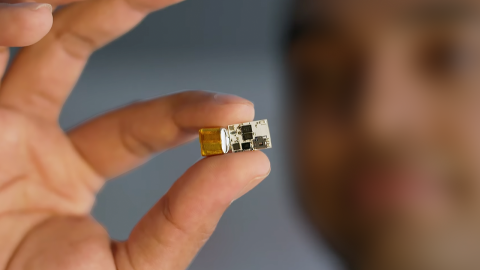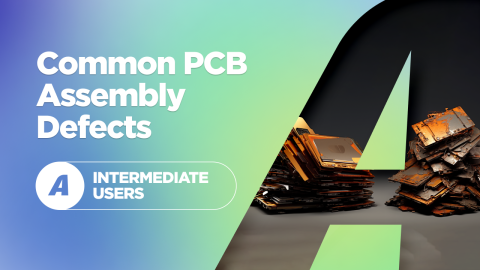When to Use a Standard Stackup in PCB Fabrication

A quick and easy way to get your circuit board into volume production is to use a fabrication house with a standard stackup. This is a very common approach in PCB prototyping and can also be used when producing at volume. A standard stackup is an entry-level configuration that a designer can use if they don't have the time or expertise to choose materials and layer thicknesses. PCB fabrication houses typically have their standard stackups that they can supply with little to no documentation needed from the designer.
While this is certainly convenient for a designer and is very useful for low-risk builds, when should you consider using a standard stackup? For more advanced designs, a standard stackup may limit what you can do in the PCB layout due to the materials and laminate thicknesses used. Even if a board is not necessarily advanced but must be highly reliable, a standard stackup might not be the best choice.
To help you determine when it’s the right time to use a standard stackup, I'll look at some examples and detail how they could be used in various types of designs.
Example Standard Stack-Up
The standard stackup from a PCB fabrication house tends to incorporate commonly available, low-cost PCB materials into standard layer arrangements with standard thickness (usually 1.57 mm or 1 mm). Every fabrication house will have a slightly different standard PCB stackup for various layer counts, and most will provide a drawing of the stackup on their company website. You can then get the stackup information and incorporate it into your CAD software, ensuring your design documentation matches the fabrication house's standard offering.

Example standard stackup with multiple copper weight options available. This stackup is available from Eurocircuits.
When looking at a standard stackup drawing, you will generally just see a layer arrangement, but much more information may be needed for many designs. A standard stackup might not include some of the information listed in the following table:
- Product name for the stackup materials
- Stackup material data sheets
- Thermal or mechanical parameters of the dielectric material
- Loss tangent value
- Dielectric constant or loss tangent stability data
Not all designs are going to need all of this data, and in many products, the above points are not even a consideration. However, when you start to look deeper at specific industries, you see many of these individual requirements start to pop up, and there are many situations where the standard stackup will not be appropriate.
To help show when a standard stackup can be appropriately used in a new PCB, let's briefly look at three classes of products: high-speed digital or RF PCBs, HDI PCBs, and high-reliability PCBs.
High-Speed/RF PCB Design
In the case of high-speed PCB design or RF PCB design, you generally need a calculation of trace impedance in order for the design to function to specification. Standard stackups do allow a calculation of impedance, as they provide the information needed to calculate it for single-ended traces—specifically, the dielectric constant and laminate thickness on various layers. For differential pairs, you can also choose a trace spacing that will contribute to setting the target impedance, which I have described in this article.
The problem with using a standard stackup, or rather assuming a standard stackup always works, comes when selecting your stackup after you have completed your PCB layouts. Consider a design with an impedance specification based on trace width, where a 50-ohm impedance requires a 10-mil wide trace, and 90-ohm differential impedance requires 8 mil/8 mil width and spacing.
If we use the example standard stackup shown below, we would be wildly off from the target impedance values.
The same idea applies to RF PCBs. The takeaway here is that standard stackups can be used in these designs, but the standard stackup has to be used before starting PCB layout and routing, not after.
HDI PCB Design
As I sit back and write this article, I realize that I have never seen a standard stackup specifically marketed for HDI PCBs. There are several reasons for this, which are particular to HDI PCBs and sequential lamination:
- Will vias be mechanically drilled or laser drilled?
- What aspect ratios can the fabrication house reliably guarantee in each process?
- If laser-drilled microvias are used, is the stackup material laser-drillable?
- If controlled impedance is needed, what will the trace width requirement be?
Once you start looking at these questions, I think you will quickly realize that standard stackups are not appropriate for HDI PCBs. This primarily comes from the fact that standard stackups generally do not use laser-drillable materials. So if you were using a multiple-lamination process to build the PCB, you could only use mechanically drilled vias. Another wrinkle is the layer thickness; I have never seen a standard stackup with layers thinner than 4 mil. This would restrict outer layers to wide traces that may not be usable with your particular components.
If your standard stackup forces the use of large traces to hit an impedance goal, the traces may not fit between the pads in a BGA.
High-Reliability PCBs
The term “high-reliability” could mean many things. For example, this could refer to outgassing, mechanical rigidity, dielectric/mechanical stability over temperature, high-voltage withstand capability, or anything in between. One of the common areas where high-reliability matters is in terms of conductive anodic filamentation (CAF) resistance, which illustrates reliability in high voltage gradients over long lifetimes.
Because standard stackups are meant to be a budget option, don’t expect the materials being used to be excellent performers in these areas. If there is a question as to reliability in any of these areas, always request the materials datasheets for the standard stackup. If these are not available, then it’s best to play it safe and shop around somewhere else.
Whether you need to build reliable power electronics or advanced digital systems, use the complete set of PCB design features and world-class CAD tools in Altium Designer®. To implement collaboration in today’s cross-disciplinary environment, innovative companies are using the Altium 365™ platform to easily share design data and put projects into manufacturing.
We have only scratched the surface of what’s possible with Altium Designer on Altium 365. Start your free trial of Altium Designer + Altium 365 today.











